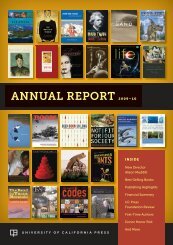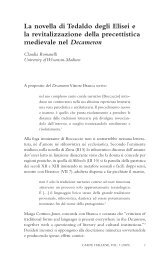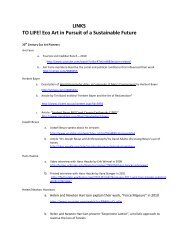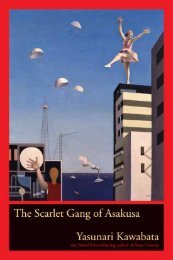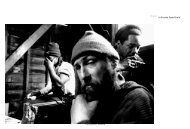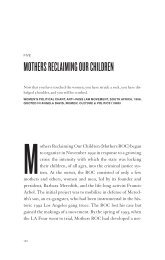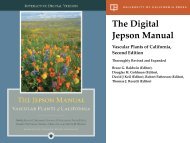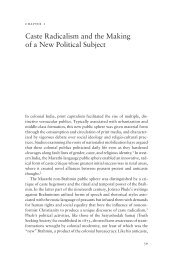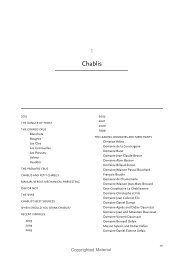Read Chapter 1 (PDF) - University of California Press
Read Chapter 1 (PDF) - University of California Press
Read Chapter 1 (PDF) - University of California Press
You also want an ePaper? Increase the reach of your titles
YUMPU automatically turns print PDFs into web optimized ePapers that Google loves.
ONE<br />
East Harlem<br />
East Harlem sustains two ongoing and <strong>of</strong>ten competing narratives <strong>of</strong><br />
urbanism: one inscribed in concrete and the other in flesh. People conform<br />
to the built environment just as the built environment conforms to people<br />
over the course <strong>of</strong> generations and centuries. The story <strong>of</strong> East Harlem is<br />
written in the sidewalks and storefronts, the abandoned buildings and<br />
corner bodegas, the public school yards and project courtyards as much<br />
as it is written in the lives <strong>of</strong> Puerto Ricans and African Americans, Italians<br />
and Mexicans, new immigrants and old. To understand East Harlem, one<br />
must understand how these two narratives fit together, how people transform<br />
the streets and how the streets transform the people.<br />
Between 96th and 125th Streets, Fifth Avenue and the East River, East<br />
Harlem lies just beyond the printed boundaries <strong>of</strong> most tourist maps and<br />
the imaginations <strong>of</strong> most Manhattan residents. There, in little more than<br />
1



